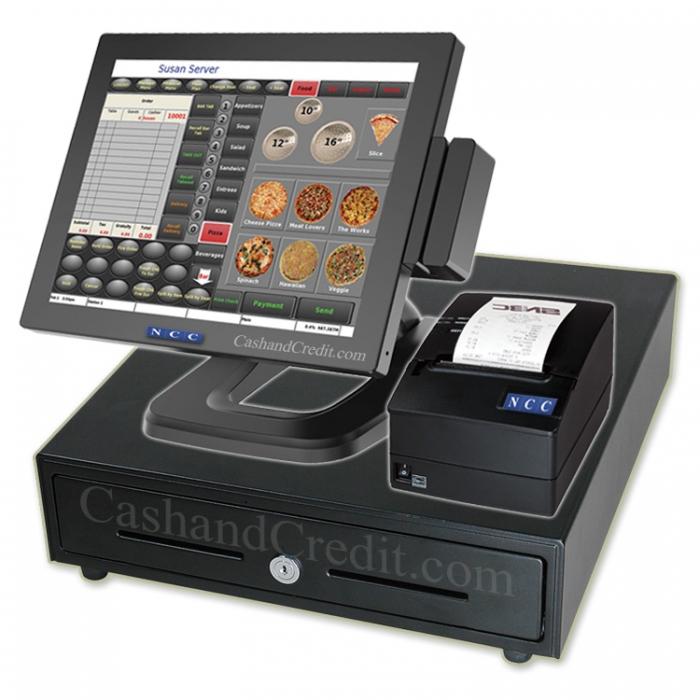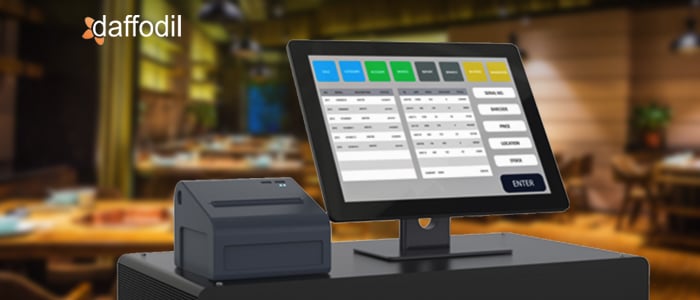How Restaurant POS Software integration affects repeat customer retention
Just How POS System Functions: A Comprehensive Overview for Entrepreneur
A POS system acts as a vital device for contemporary services, incorporating numerous parts to simplify procedures. It incorporates equipment like barcode scanners and software for sales tracking. This system not just processes transactions however likewise takes care of supply and analyzes customer habits. Comprehending its performance can greatly impact a company's effectiveness and decision-making. What are the crucial components that add to this performance? Discovering these parts offers important insights.
Comprehending the Components of a POS System
A Point of Sale (POS) system is composed of several crucial components that function with each other to assist in deals and handle service procedures. At its core, the hardware includes devices such as a sales register, barcode scanner, receipt printer, and settlement incurable, all essential for refining sales (Restaurant POS Software). The software program element takes care of supply, sales tracking, and consumer information, providing beneficial insights for business decisions.Additionally, data sources store purchase records and customer information, making certain information integrity and security. Network connection allows real-time updates and access to cloud-based solutions, enhancing operational efficiency. Customer user interfaces, developed for ease of usage, allow personnel to browse the system rapidly, minimizing training time. With each other, these parts develop a cohesive system that streamlines the sales procedure, improves customer support, and aids in efficient administration of service resources. Understanding these components is vital for service proprietors seeking to enhance their POS systems
Just How Sales Purchases Are Processed
When a customer determines to buy, the sales transaction launches a series of systematic steps within the POS system. The cashier inputs the items being bought, which are checked with a barcode viewers or by hand entered. This action recovers item information, including prices and applicable taxes, from the system's database.Next, the consumer exists with the overall quantity due. The POS system after that refines the settlement, whether via cash, credit score card, or mobile settlement approaches. For digital settlements, the POS firmly connects with settlement cpus to accredit and confirm the transaction.Once the settlement is validated, the system creates an invoice, which can be published or sent digitally. This receipt works as proof of acquisition for the consumer. The purchase information is videotaped in the system, making certain accurate sales documents and financial tracking for the business.
Inventory Management and Tracking
Effective inventory management and monitoring are vital elements of a POS system, as they ensure that services preserve suitable supply levels and reduce inconsistencies. A robust POS system permits real-time inventory updates, mirroring sales and returns immediately. This enables entrepreneur to monitor stock degrees precisely, guaranteeing that preferred products are conveniently available while preventing overstocking of less popular products.Additionally, advanced POS systems provide functions such as computerized stock signals and reorder tips, enhancing the purchase process. Barcoding and RFID modern technology improve precision in tracking inventory activity, lowering human error. Substantial reporting tools give insights right into supply turnover prices, aiding companies make educated decisions about acquiring and product offerings. Eventually, efficient Get the facts inventory monitoring with a POS system not only improves operational performance but likewise boosts consumer contentment by guaranteeing product schedule.

Examining Client Data and Insights
Customer information evaluation serves as an effective tool for businesses using a POS system. By gathering and examining transaction data, organizations can reveal useful insights regarding customer behavior and preferences. This analysis enables them to identify acquiring fads, peak buying times, and preferred products, thereby educating supply choices and advertising and marketing strategies.Additionally, organizations can section their customer base, enabling individualized advertising initiatives that satisfy specific demographics or acquiring practices. Recognizing client loyalty patterns additionally helps in creating targeted promotions and incentives programs.The data gleaned from a POS system can additionally disclose insights into consumer comments, enabling businesses look at here to make enlightened decisions pertaining to item offerings and service renovations. Eventually, leveraging customer information effectively can enhance the total shopping experience, foster consumer complete satisfaction, and drive income development.
Benefits of Carrying Out a POS System
Implementing a POS system supplies numerous benefits that can greatly enhance business procedures. To start with, it streamlines purchase processes, reducing wait times and boosting customer fulfillment. By automating sales processes, companies can lessen human mistake and guarantee accurate record-keeping. Furthermore, a POS system gives valuable data analytics, allowing proprietors to track sales patterns and stock degrees in real-time. This understanding sustains informed decision-making, helping to enhance stock administration and advertising and marketing strategies.Moreover, many POS systems incorporate with various other business tools, such as audit software program, simplifying financial monitoring. Improved employee monitoring attributes, such as tracking hours and performance, further add to operational efficiency.Lastly, the execution of a POS system can cause enhanced revenue through improved customer experiences and critical insights, ultimately promoting company development and sustainability.
Regularly Asked Concerns
What Sorts Of Organizations Can Gain From a POS System?

Just how Much Does a POS System Generally Expense?
The cost of a POS system typically ranges from a few hundred to numerous thousand bucks, depending upon functions, hardware, and software - Restaurant POS Software. Companies should take into consideration ongoing charges for maintenance, assistance, and deal processing when budgeting

Can I Integrate a POS System With Existing Software?
Integrating a POS system with existing software is commonly possible. Lots of systems provide APIs or built-in compatibility attributes, enabling businesses to simplify procedures and enhance performance by connecting different software application applications successfully.
What Training Is Required for Team to Utilize a POS System?
Training for team to use a POS system typically consists of understanding software program performances, click here for more info processing deals, handling stock, and handling client interactions - Restaurant POS Software. Practical presentations and hands-on session boost proficiency and self-confidence being used the system successfully
What Happens if the Web Goes Down While Utilizing a POS System?
If the internet goes down during POS system use, transactions might be disrupted. Numerous systems supply offline capabilities, enabling standard operations to continue, yet full functionality, consisting of real-time supply updates, will be limited.